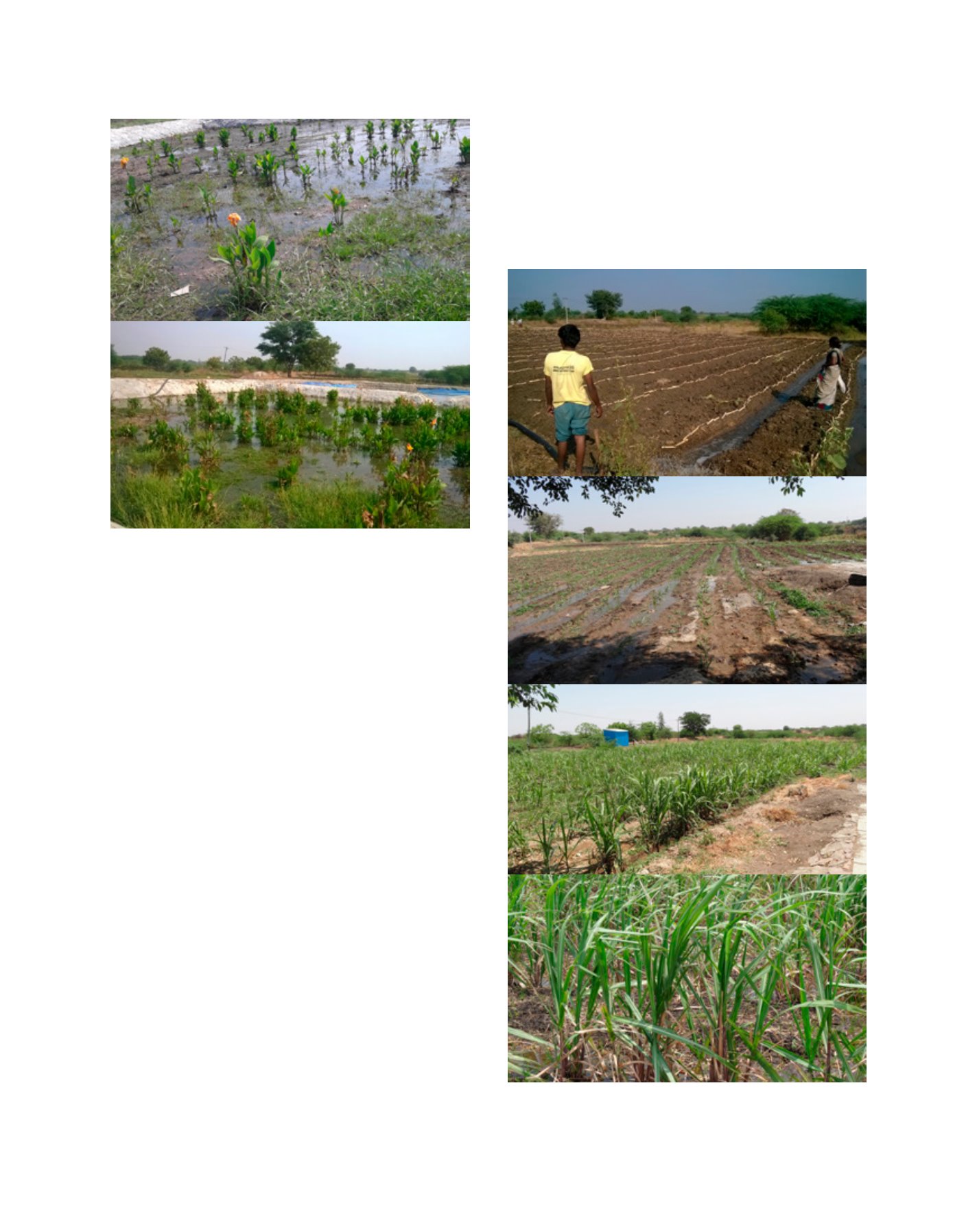

[
] 92
A B
et ter
W
or ld
Constructed wetland for the treatment of industrial effluent
A small CW was commissioned at the Sangareddy campus of
SAB Miller, a large brewery, to investigate the bioremediation
potential of industrial wastewater. The CW comprised two
chambers; a 20m x 20m x 1m sub-surface cell and a holding
tank of the same capacity for the treated wastewater. The sub-
surface cell featured a 250mm-deep layer of 40mm-diameter
gravel at the bottom, covered with two successive layers of
medium (20mm) and small (10mm) gravel, each to a depth
of 250mm. A 150mm layer of 1.5mm coarse sand constituted
the top layer. The CW was sown with
Cana indica
during
November 2015 and the plants were established by January
2016. The hydraulic loading rate was 60m
3
/day and the CW
operated with a hydraulic retention time of approximately
three days. The average wastewater treatment efficiency of
the wetland is given in Table 2. The pH value of the wastewa-
ter remained in the alkaline range throughout the trial, both
at the inlet and the outlet of the CW. The chemical oxygen
demand (COD) as well as the inorganic nitrogen removal
efficiency (RE) were 78% and 85% respectively. The treated
wastewater COD of 21mg/L was much less than the limit of
250mg/L prescribed by the Central Pollution Control Board
of India (CPCB, India) for irrigation suitability. The phos-
phate removal efficiency was 37.8 %.
The high salt concentration was reflected in the electrical
conductivity reading of above 2ms/cm for both the inlet and
outlet (the 2010 CPCB irrigation standard is set below 4 ms/
cm). The overall sodium absorption ratio (SAR) indicated
little change between inlet and outlet but fell well short of
the 2009 CPCB standards which sets the SAR limit at 26. The
treated wastewater had 166mg/L chloride which is less than
the The Food and Agriculture Organization of the United
Nations standard of 354mg/L. However, alkalinity – the
measure of dissolved carbonates, bicarbonates, and hydrox-
ides concentration – in the wastewater was much greater than
the desirable 100mg/L limit for agriculture. The combination
of high alkalinity and high pH therefore reduced the poten-
tial of use for irrigation of the treated wastewater. The treated
wastewater was subsequently used for sugar cane cultivation
in the adjacent black soil fields with a yield of 43t per acre.
Constructed wetland sown with
Cana indica
at SAB Miller, Sangareddy,
Telangana, India. Top: November 2015; bottom: January 2016
Phases of sugarcane cultivation at SAB Miller, Sangareddy, Telengana,
India, showing: planting; cane sprouting; 38 days after planting;
90 days after planting
Images: ICRISAT
Images: ICRISAT
















